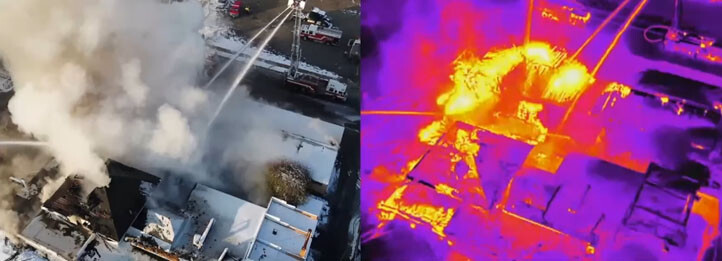K
Kathleen Martin
Guest
In early 2021, Teledyne acquired FLIR to complement its wide array of products that covered the electromagnetic spectrum but not its infrared portion, becoming Teledyne FLIR. Together, both companies are developing new products to address all the measurement, imaging, and data gathering across the whole electromagnetic spectrum, whether under the sea, on the land, in the air, or even in space.
Later that year, the company hosted the "4 Reasons Why UAS Drone Pilots Need Clear Radiometric Thermal Zoom" webinar. Presented by Kelly Brodbeck, Product Manager for Teledyne FLIR's Commercial UAS Division, the webinar introduced a new sensor, the TZ20-R, and aimed to explain how the combination of superior optical thermal zoom and radiometry enables more efficient search and surveillance, safer inspection, and better reporting for drone pilots.
Today, at one level or another, we're all photographers. Be it with a professional or a smartphone camera, we understand the concept of zooming in and out while taking a picture and how important that feature is in certain situations. Getting closer to your subject is always a good thing as it allows more flexibility with your compositions. Zoom becomes an essential feature for a drone where you often cannot get very close to your subject due to terrain difficulties or regulations.
Also, most people understand the value that thermal cameras on drones can provide since they've been out there for quite a while now. For example, during a fire like the one in the image below, smoke can obscure the hottest parts, making it harder for First Responders to act. With a thermal camera mounted on a drone, First Responders have more information and can take action quicker, resulting in a more efficient and safer job.

Another essential feature is radiometry, which is the process of taking the information that's at every pixel in a thermal image and associating it with something that the human brain can understand - like a temperature.
"There are lots of things you can do with radiometry," Brodbeck said during the webinar. "In the picture below of a substation, you can see several white areas that I don't have highlighted red. They're glowing and warm, but are they areas of concern? Hard to say. You're not getting the full story if you don't have radiometry in a thermal picture. By enabling radiometry, I've turned on what we call an isotherm to shade anything in the color red that's above a certain threshold. In this case, 75 degrees Celsius and above because anything below isn't much of a concern. With radiometry, you get a lot more information out of a thermal picture."
Continue reading: https://www.commercialuavnews.com/surveying/4-reasons-why-uas-drone-pilots-need-clear-radiometric-thermal-zoom
Later that year, the company hosted the "4 Reasons Why UAS Drone Pilots Need Clear Radiometric Thermal Zoom" webinar. Presented by Kelly Brodbeck, Product Manager for Teledyne FLIR's Commercial UAS Division, the webinar introduced a new sensor, the TZ20-R, and aimed to explain how the combination of superior optical thermal zoom and radiometry enables more efficient search and surveillance, safer inspection, and better reporting for drone pilots.
Today, at one level or another, we're all photographers. Be it with a professional or a smartphone camera, we understand the concept of zooming in and out while taking a picture and how important that feature is in certain situations. Getting closer to your subject is always a good thing as it allows more flexibility with your compositions. Zoom becomes an essential feature for a drone where you often cannot get very close to your subject due to terrain difficulties or regulations.
Also, most people understand the value that thermal cameras on drones can provide since they've been out there for quite a while now. For example, during a fire like the one in the image below, smoke can obscure the hottest parts, making it harder for First Responders to act. With a thermal camera mounted on a drone, First Responders have more information and can take action quicker, resulting in a more efficient and safer job.

Another essential feature is radiometry, which is the process of taking the information that's at every pixel in a thermal image and associating it with something that the human brain can understand - like a temperature.
"There are lots of things you can do with radiometry," Brodbeck said during the webinar. "In the picture below of a substation, you can see several white areas that I don't have highlighted red. They're glowing and warm, but are they areas of concern? Hard to say. You're not getting the full story if you don't have radiometry in a thermal picture. By enabling radiometry, I've turned on what we call an isotherm to shade anything in the color red that's above a certain threshold. In this case, 75 degrees Celsius and above because anything below isn't much of a concern. With radiometry, you get a lot more information out of a thermal picture."
Continue reading: https://www.commercialuavnews.com/surveying/4-reasons-why-uas-drone-pilots-need-clear-radiometric-thermal-zoom

